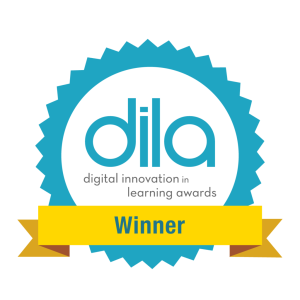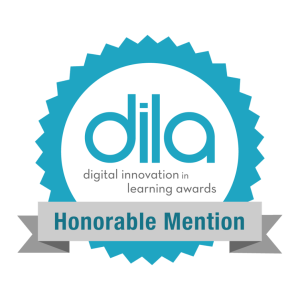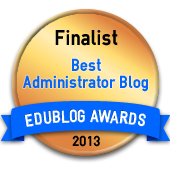Alternate Endings
This is a guest blog post written by Mrs. Emilie Garwitz. Emilie is a Kindergarten Teacher at Greenwood Elementary, and this is her first blog post. Please connect with her on Twitter @MrsGarwitz and throw some support/encouragement her way. (Emilie and her team are doing some extraordinary work with students.)

We all know the endings to familiar stories: the shoe fits, Cinderella marries the prince, and Harry Potter defeats Voldemort to save the wizarding world. We find ourselves often thinking and talking about endings long after we have finished reading. Generations of teachers have challenged learners to use their creative talents to write alternate endings to these beloved tales. But how do we tailor this classic method to our current generation of learners – the next innovators in our world? In what ways can we apply 21st century skills such as collaboration and creativity to the learning experience and standards? And, what if the artifacts of learning lived on beyond the lesson using digital tools relevant to young students?
Recently, my kindergarteners have been fascinated by the alternate endings to the gingerbread man story. I wanted to take their energy and dive deeper. The classic method would have been to have my students use their creativity to write a new ending. And the challenge was that kindergartners’ writing skills and stamina are still developing. So I asked myself, what motivates them? What tools can I give them to help them be successful when so many of their skills are still in progress?
This is when I turned to our school’s mobile Makerspace carts and challenged my students to build alternate endings to the gingerbread man. The objective was kindergarten friendly: I can create a new ending to the gingerbread man using legos. The results were astounding. My students planned, collaborated, shared, built, created, and reflected for over an hour – a long time our youngest learners. Their creativity stretched well beyond my highest expectations and the experience was authentic and meaningful. They changed the characters, the setting, and more. One group’s version of the story had a copy machine that the gingerbread man used to make twenty copies of himself in order to outfox the fox.
“We’re engineering!” one student exclaimed. This was the moment when I started thinking about the possibilities for their future. I was not just teaching a skill, I was imparting on kids a new mindset – an engineering mindset. Building their alternate endings was cross-curricular. During the planning stages, I looked up how many standards connected to this objective and was blown away.
While learning to write and practicing writing are critically important, this whole exercise made me reflect on the choices I make as a teacher. Maybe I should not limit their tools in the classroom when it’s time to create. How could using tools that are relevant and motivating to students change the learning experience?
After an hour of innovating, it was time to take apart the creations – such a hard thing to do for both teachers and students after so much time, effort, and creativity are spent. But what if the learning does not stop when the last lego brick is cleaned up? What if we could make time in the classroom to help students’ ideas and work live on? Enter, Google Drive. When students take pictures of their own work, upload it, and share via the Drive with their families, they truly own every step of the learning experience. Digital learning is relevant to students and the ability to share learning with families helps connect us.
Every teacher savors that moment when her students achieve bigger things than she ever dreamed possible. Witnessing 5 and 6 year-olds upload photos of their creations to Google Drive was one of those seminal moments. Most people might hear “Google Drive and kindergartners” and think “that can’t end well.” I guess you could say my class created an alternate ending of our own.
Posted on December 22, 2015, in Uncategorized and tagged EdTech, GWgreats, Innovation, Kchat, Kindergarten. Bookmark the permalink. 5 Comments.














Awesome post, Emilie! Giving students the time, tools and channeling their creativity ends with such amazing results…no matter the age. Keep doing what you’re doing! 🙂
Emilie, this is a FANTASTIC post! I loved reading about your students and could feel the energy and creativity oozing from your words as I read them. I hope that you will share more about the adventures in learning from your classroom as the year goes on. You are doing fantastic work and your students are so very lucky to be in your classroom! Thanks for giving your kids the tools to imagine, create, and learn!
Hi Anne, Thanks so much for the feedback to Emilie. If you have not done so already, I’d encourage you to follow her new blog “In Kids Shoes.” She’s doing some incredible things and I learn from her and her team daily! ~Brad
Pingback: Alternate Endings - Face of Education
Pingback: Our Own Alternate Endings | In Kids' Shoes